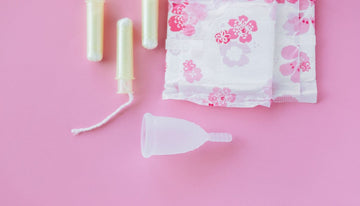
In her book Everything You Must Know About Tampons (1981), Nancy Friedman has written the following excerpt -
“There is evidence of tampon use throughout history in a multitude of cultures. The oldest printed medical document, Papyrus Ebers, refers to the use of soft papyrus tampons by Egyptian women in the 15th century BCE. Roman women used wool tampons. Women in ancient Japan fashioned tampons out of paper, held them in place with a bandage, and changed them 10 to 12 times a day. Traditional Hawaiian women used the furry part of a native fern called hapu'u; and grasses, mosses and other plants are still used by women in parts of Asia.”
Yes, tampons might seem like they are a fairly new product in India but they are not a new concept around the world. In fact, tampons have been around for hundreds of years. India has always been fairly traditional about the virginity of a woman. So even if a device that would help manage menstruation better than traditional cloth, anything invasive is usually looked upon as taboo.
This article breaks down a tampon for what it is, how to wear one, how to dispose of it and how to avoid TSS.
Simply put, a tampon is a menstrual hygiene product that is cylindrical in shape, is made of cotton and is designed to absorb menstrual flow inside your vagina. This diagram breaks down tampons to explain what they are.
Cylindrical shape for easy navigation
Cotton thread to pull the tampon out
Cotton and/or viscose body to absorb menstrual flow
Outer layer features perforated film for optimising absorption
Grooves on the outer layer allow tampon to stay in place while allowing even distribution of blood storage
Now that you know what a tampon is, let's teach you how to wear a tampon. The key to wearing a tampon right is to relax. Yes, tampons are invasive and if you have never tried them, they can be intimidating.
Tampons are designed to support your active lifestyle and millions of young persons around the world wear them. Here’s how to wear a LemmeBe tampon.
- Remove the hygiene wrap off the tampon, hold on to its string and pull on the string in a gentle circular motion. This will expand the base of the tampon very slightly.
- Use your thumb to hold on to the string and your index finger to guide the tampon towards your vagina. It won't hurt.
- It is easier to insert the tampon inside your vagina if you are seated on the toilet seat and your legs are parted. Some women even lie down to wear a tampon.
- Insert the tampon - guide it in a downward direction toward your anus. (Yes, that is the right way). Use your index or middle finger to push the tampon inside your vagina.
- If the tampon is inserted correctly, you will not feel it when you stand up. If you can still feel the tampon inside you when you are moving around or even when you are seated, you have not inserted the tampon correctly.
- Don’t worry, it might take a few tries to get it right if it’s your very first time. Don’t be discouraged, just tug on the string, pull out the tampon and try one more time.
- Remember to change your tampon every four to six hours. This is important and our next segment will tell you why.
A tampon is an invasive device. Your body isn't used to having foreign objects inside it for a prolonged period. Additionally, a tampon doesn't just absorb blood, it also absorbs vaginal secretions that contain good bacteria that protect your body from infections. So, to reduce the risk of TSS or Toxic Shock Syndrome, it is important to change your tampon every four to six hours and wear a pad at least once every 24 hours when you are on your period.
Tampons aren't dangerous. They can be a little intimidating. But remember, they have been around for centuries. So they can't be all that bad.




